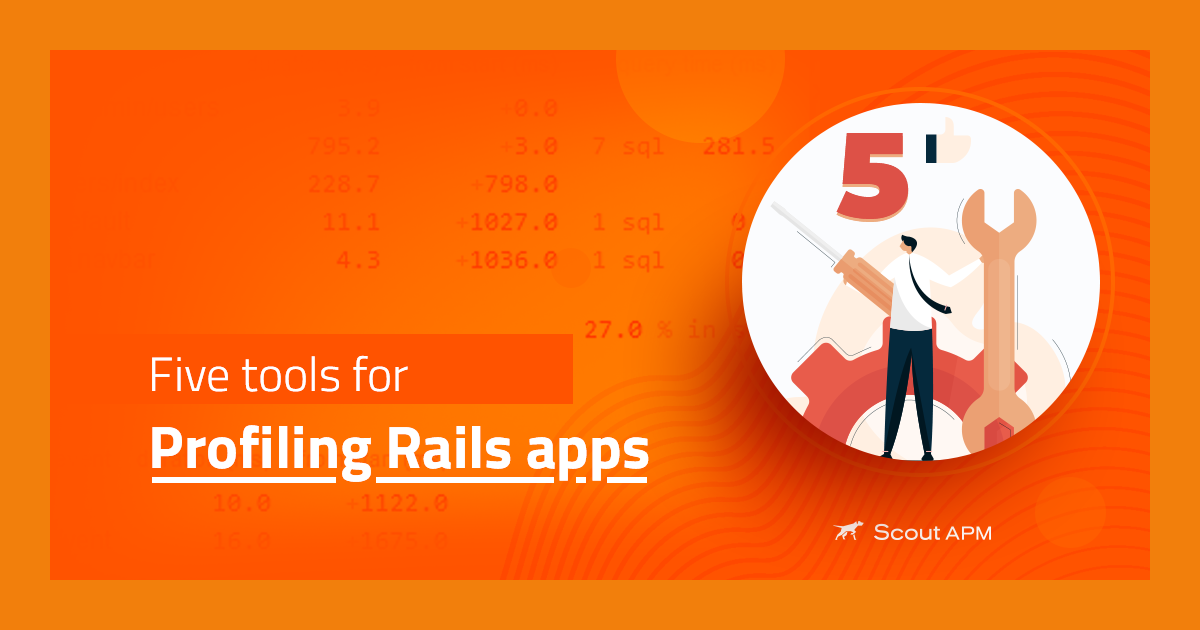PHP Symfony APM Benefits

If you are a Symfony PHP developer, you will need Symfony monitoring. With the ever-increasing need for web applications to perform at their best, developers require full visibility and observability. This way, they have full control of the performance and its maintenance.
Imagine you have created an application. You have deployed it but do not know how it works. This is where an Application Performance Monitoring tool is of great use. It should be on every developer’s toolkit. Not only does it make the job easy, but it also allows a developer to be more efficient and effective with their workflow.
With 77.6% of websites online using PHP, it has become imperative that developers like you should include an APM in their toolbox. This inclusion in their starter pack tackles issues before they become too difficult to handle.
Complexities in the development of applications and ease of finding alternate applications have increased, so businesses need to be able to solve issues faster. This is where your APM tool will create a robust defense system for you, so you can effectively troubleshoot any problem coming your way.
This article will inform you about Symphony PHP and how an APM tool can support it. We will walk through the benefits of APM and why it is imperative to have one in the Developer Starter Pack. So, let’s buckle up and read on to be more informed about the landscape of application performance monitoring for PHP and especially Symphony.
What is PHP?
Before we dive deep into PHP Symfony, let’s get to know what PHP is. If you have used websites like Facebook, Wikipedia, or Slack, you’d be surprised to know that they are developed on PHP. What is PHP used for? It is a scripting language that supports developers in web development.
Since it is open source, everyone has access to it. This access allows easy embedding into HTML. What is amazing about PHP is that it is an interpreted and object-oriented language.
PHP is simple. It is efficient and makes developers’ lives easy by connecting databases and load applications faster. Developers familiar with PHP prefer it for its lightweight design. Due to the security it provides, PHP has several types of frameworks, with the most popular framework being Symfony.
Here Comes Symfony
Symfony is a popular PHP framework with several components. It focuses on web applications. The components it houses are a set of decoupled and reusable components. They support developers by cutting down their time writing new code by allowing them to use these existing components that do the same job.
As we write this, over 600,000 developers in over 120 countries are contributing to Symfony components. The philosophy behind Symfony is simple. It wants to embrace and promote professionalism. It is developed around the need to form best practices. Eventually, it believes that applications should be standardized and interoperable. In doing so, it makes development and websites that are built on Symfony frameworks can be simple and efficient in the end.
Why Use Symfony?
You know what Symfony is, but did you know there are many key reasons to use it?
- Developers who work on large-scale enterprise projects are their fervent followers. There is a wide variety of support that is available. This makes it very easy for them to follow through if there are any issues.
- Symfony’s installation couldn’t be easier and simpler. The configuration is smooth for many platforms that are available right now.
- Reusable. PHP components for Symfony are a godsend for developers like you. These components are database-engine independent. They are stable and offer compliance with most web best practices and design patterns. It is also vendor-independent, which means it will be easy to integrate with libraries created by other vendors.
- Symfony promises flexibility. This gives developers a lot of freedom and options to integrate with other available projects.
- Learning to use Symfony is very easy. Some components may be for advanced developers and require some expertise. However, once a developer becomes familiar with the component, it becomes effortless to use the next time around.
- The framework for Symfony is designed for longevity. Since the structure of the framework is reusable, it allows developers to pick up from where another developer has left off and either continue working on it, upgrade it, or maintain it.
- Another reason why it is flexible is that it allows developers to hop onto other PHP libraries, even if they are not Symfony-specific. This interoperability offers freedom for PHP developers and makes it easy to create their web applications.
Reliable, mature, and flexible are three things that Symfony boasts. If you search for top PHP frameworks, Symfony will often be found there on top of the list.
Key Benefits of Symfony Monitoring
Having An APM is not an Option; it is a Must Have
If you are using Symfony, it is highly recommended that you use an APM tool that offers Symfony Monitoring. At its core, it monitors and evaluates the end-user experience for the web application you have deployed. It helps you analyze your application to see if it is working as intended.
Here’s what APM can do for you:
- It assists the developer working on the app. The information it provides helps you test and tweak areas that you are working on. Insights that the APM generates can easily direct you toward the point of origin of a problem, such as bottlenecks in the system.
- APMs identify areas that have bottlenecks or build-up. Without an APM's help, developers would spend hours scouring over code to look for issues. Now, the APM pinpoints areas that are reaching worrisome thresholds, so you can neutralize them before it grows further.
- The best part about how an APM works is that it is real-time. That means you are not waiting for results. This tool is vigilant, and it does its work diligently and automatically.
- A good APM tool will also let you understand the end user. It tracks issues that are being caused by their existing hardware, such as CPU usage. This way, you can also make decisions to remedy the situation so you can be inclusive about your end-users too.
So what are the benefits of Symfony Monitoring?
Ok, so you know what an APM can do for you. Now there are a lot of APM tools available online. One of the top-rated tools is Scout APM. For PHP, Scout APM specifically works well for Symfony and Laravel. Here’s how Scout APM can help your Symfony journey.
Performance details on every web endpoint and background job
Web and background jobs are always monitored. With Scout APM, you do not have to worry about it. It will monitor the performance requests that are being made to the HTTP controllers. This also includes queued jobs in the background. Once it has done its job monitoring, it does not stop there. Insights will be sent to you, giving you a full analysis of the situation. Expect to have insights such as response time and which endpoint, path, user, or requests are the ones that need your attention. This way, you can easily fix the issue before it causes major damage to your web application.
Detailed transaction traces with backtraces
Scout APM and most other APMs are automated by default. This way, you can easily get information about what is happening with your application. It collects detailed transactions in relation to web endpoints and background jobs.
It then provides you with visual queues to direct you to places that need your attention. This includes all kinds of bottlenecks in:
- Line of code (where in the code there are issues)
- Author (who in the organization should be contacted for an issue or who wrote the code with an error on it)
- Commit date (when a commit was applied to the branch)
- Deploy time (when the code was deployed)
Enhanced database query monitoring
When you know what is wrong with your system it allows you to fix things faster. One place that needs attention is your database connected to your framework. ScoutAPM ensures that there is a high-level overview of your database query performance. It also provides you with detailed information about specific queries that are made in the system.
Detects repeatedly expensive database queries
With a high-level overview of your database, ScoutAPM flags queries that are repetitively taking too long to complete. This often needs monitoring because these queries become inefficient as data in the system grows.
Alerting
Easily get information about what is happening when your system reaches the thresholds that you configured. It immediately contacts your team about capacity and performance issues. This way, you are on top of everything.
Deploy tracking
Just deploying your code is not the only job. Once it is deployed, you will ask, is it working as intended? The simple answer is that the APM tool you employ should help you with the answer. It will show you information about the system before you deploy it and then compare it with what happens after the deployment has happened. With this information equipped, you can see what needs to be worked on. Because this is automated, you can easily reset it if things do not go your way.
Intelligent performance digest email
You can receive emails that summarize the performance of your apps. The frequency you can choose from is daily or weekly updates. These emails will inform you of outliers and endpoints that require your attention. This way, you’ll be reminded to update your task list and get to fixing any issues if they arise. It can also give you information comparing it with the previous digest email so you can keep track of your performance.
Embed charts
ScoutAPM allows you to view an overview of your application’s performance on another web page. This is especially helpful for internal web pages that you can share with your colleagues.
Integrates with GitHub, Sentry, Rollbar, Bugsnag, Zapier, and more
Easily view all performance and error data in one place with the integration of GitHub, Sentry, Rollbar, Bugsnag, Zapier, and more. These integrations allow you more flexibility and make it easy for you to track information in one place.
An APM is Your Best Weapon to Achieve Symfony Greatness
Developing your best website or web application is a journey. Symfony’s flexible, mature and reliable PHP framework can allow you to create quickly. However, that is only the first part of the job. You’re going to deploy it and let people use it. To support your business and your app development, you will need an APM tool.
Scout APM is one such tool that can help you create better web applications by giving you all the inside knowledge about how the app works. Staying in the dark will cost you, so it is always better to get a handle on the performance of your application. This way, you can avoid more significant mishaps and have the badge of reliability as a company for your end-users.




